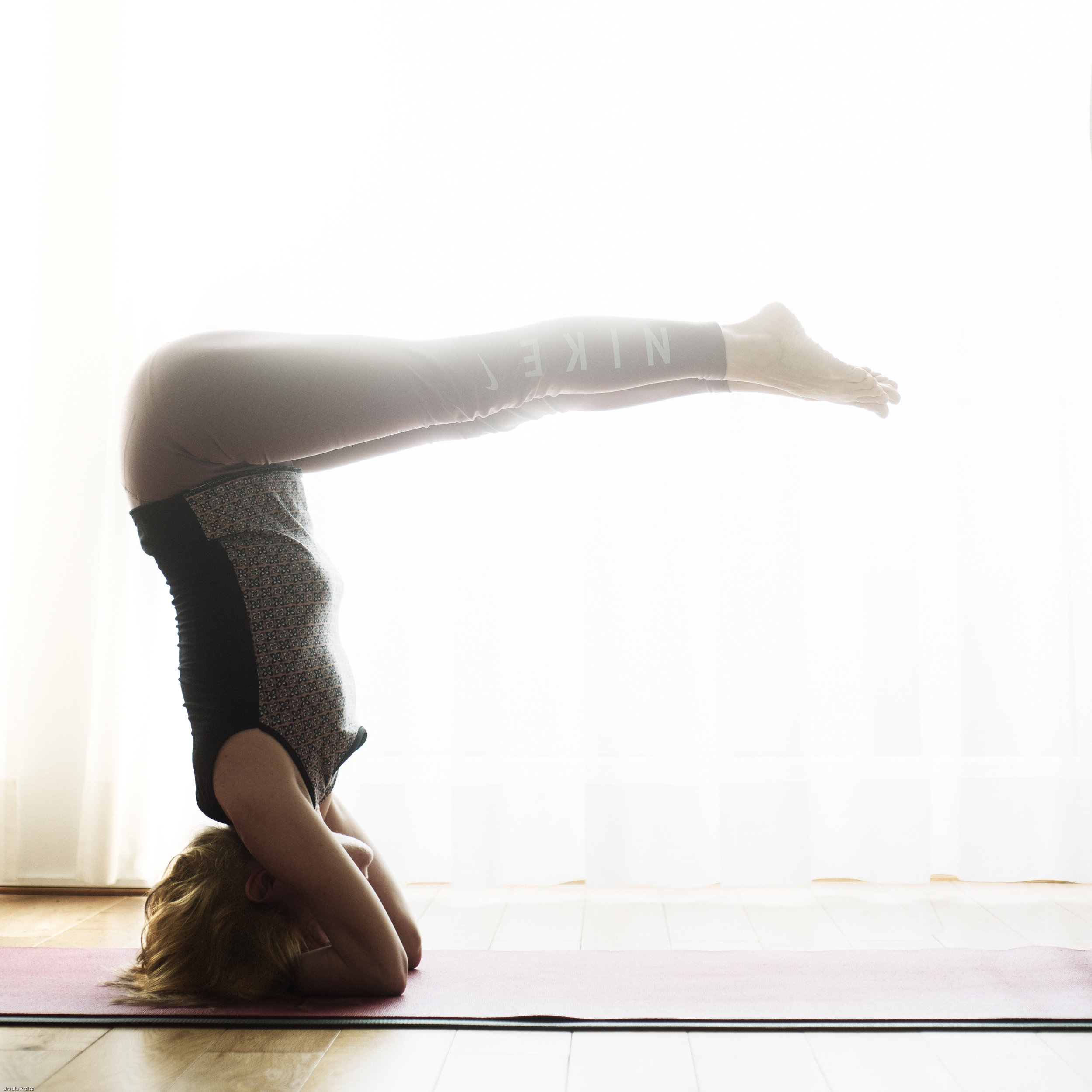From Sirsasana to vrschikasana:
The devil must have been riding me when I signed up for the 2-hour workshop and wished to learn how to go from headstand to scorpion.
I worked on my headstand in February. I can hold it for three minutes. I tend to get bored. Unfortunately, after three minutes I fall out of the pose. After three minutes, I don't have the strength to do slow, controlled movements.
But pushing myself into scorpion requires even more strength. It's madness.
As you can see, the backbend is pretty weak. When I fall out of the pose, I fall from very high up.
I'm going to the session tomorrow with my heart pounding. I definitely don't want to injure myself.
On the other hand, you should always have the confidence to try something. My goodness, some people manage to put their feet on their heads.
There's only one thing I can think of: Keep practising.
Pictures are the most honest feedback I know.
Well, a start has been made.
Let's see what the position looks like next year.
I'm really curious to see how the yogis will teach me to get into the pose without using the wall.
It's going to be an exciting two hours tomorrow. I’ll report back tomorrow.
PS:
There had to be more attempts. The first picture shocked me. The other pictures were better. I got into the headstand a bit further away from the wall. I now had the courage.
I also learned how to push myself up. You push your arms forward. That way you automatically come up.
I'm almost inclined to try a scorpion again.
The pictures prove what I described the other day. You have to trust yourself to do new things. That's the quickest way to learn.
In Ashtanga Yoga it’s an asana of the Advanced B series.













